Premium Only Content

Build Massive Quads At Home
Build massive quads at home
Building massive legs at home sounds like an impossible task unless of course, you have a garage gym with a squat rack and a ton of weight. But it can be done.
Today we are going to be focusing on the quadriceps. The reason they are called quads is that they are made up of 4 main muscles. The rectus femoris, vastus intermedius, vastus lateralis, and vastus medialis. By choosing the right exercises we will ensure we’re hitting each of these muscles. So, we can get the most out of our leg training at home.
If you are interested in losing body fat and adding muscle, please email me at [email protected] for information on my personal training services.
Check your testosterone levels from home. Just click this link http://trylgc.com/laurence and receive 20% off with code: LAURENCE20 I receive commissions on referrals to LetsGetChecked. I only recommend services I know and trust.
Facebook; https://www.facebook.com/Fit-and-50-5...
My Amazon page link; https://www.amazon.com/shop/fitand50
My Affiliate link to Lebert for their Equalizer bars and more; https://lebertfitness.com/?ref=hmkesu... and use the discount code FITAND50 you will receive 15% off your purchase
We will start with the vastus medialis that is the teardrop muscle right by our knee. It is a very important muscle when it comes to stabilizing the knee and when it is weak it can result in a knee injury and pain. In our squat, it is activated in the top part of the movement that last 20 or 30 percent before we lockout our legs. This is also where we are the strongest in our squat, so we can hit technical failure, because we can no longer do a full squat in good form without fully exhausting this muscle. Bands can help with this as they provide the greatest amount of resistance at the top part of the movement.
You can buy bands that are of different thicknesses. Mine are colour coded with green being the easiest and grey being the hardest. Now as with any muscle on the body including legs in order to make them grow you need to apply progressive overload. You can do this by gradually using heavier bands or more than one band at a time. You can also slow down the pace or increase the number of reps. Another excellent option is to work your legs unilaterally with both reverse lunges and Bulgarian split squats.
Another exercise that really hits that teardrop muscle is leg extensions, if you do them with your knees starting in the neutral position and turn them outward as you extend your legs it will emphasize the vastus medialis more.
While we are on leg extensions if you do the movement starting with your knees in the neutral position and turn your legs inwards as you extend your legs it hits the vastus lateralis more which is the muscle that gives us that quad sweep.
Squatting with your legs together really hits the outer thigh area as well. I like to do this with dumbbells as a suitcase squat and finish with part reps in the bottom half of the movement. With the dumbbells, you don’t have to stand up to rack the weight once you have fully exhausted the vastus lateralis you just set the dumbbells on the floor. I particularly like the Bulgarian split squats especially when you finish with partial repetitions at the bottom.
I want to talk a bit about the adductors while they aren’t part of the quads if you want to build a big leg working your adductors is key. From a performance standpoint having strong adductors protects us from groin pulls and helps to stabilize our hips in motion which can improve our running and sprinting.
I like to do sumo front squats to work my adductors as that wide stance transfers much of the load to the inner thigh. A great unilateral movement for the adductors is a side lateral lunge.
The best way to isolate our adductors is with the adductor side plank.This can be held for time or you can do it for reps even adding weight with a dumbbell or plate as you gain strength.
The next muscles are the vastus intermedius and the rectus femoris. The vastus intermedius is found underneath the rectus femoris and its primary job is to extend the knee.
The rectus femoris is a visible muscle the creates separation and detail in the quads. In addition to aiding in knee flexion, it also is responsible for hip flexion. It gets worked with all the major leg movements, but if you wanted to isolate it and really feel it work. Then you would lay on your back. Now you could do this on the floor with ankle weights, but I like to use my bench and bands.
Bend one knee while keeping the other leg straight then lift the straight leg up until it is parallel with the bent one then slowly lower it down again.
One of the benefits of knowing how to isolate all these different muscles is it allows you to pre-exhaust them before moving into a compound movement allowing you to be able to hit failure with less weight.
-
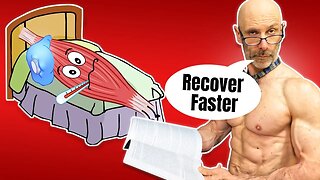 4:53
4:53
Fit and 50
2 years ago $0.07 earnedHow to Speed Up Muscle Recovery Over 50 (Recover Like a 20 yr old)
6154 -

Stephen Gardner
1 hour ago🔥Elon EXPOSES The Exact Blueprint Dems use to CHEAT on Joe Rogan!!
1.12K4 -
 UPCOMING
UPCOMING
Dad Saves America
5 hours agoMask Off Mamdani: NYC’s Socialist “Savior” Is Another Spoiled Aristocrat
32 -
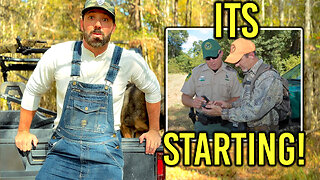 6:14
6:14
Buddy Brown
6 hours ago $0.74 earnedLaw Enforcement Caught SNOOPING on PRIVATE LAND! | Buddy Brown
4325 -
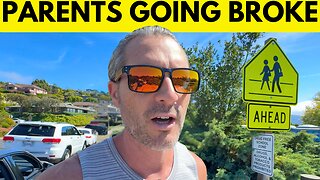 16:21
16:21
Real Estate
1 month agoIt’s Not Just You..NO ONE CAN AFFORD KIDS ANYMORE
109 -
 LIVE
LIVE
LFA TV
23 hours agoLIVE & BREAKING NEWS! | MONDAY 11/3/25
1,178 watching -
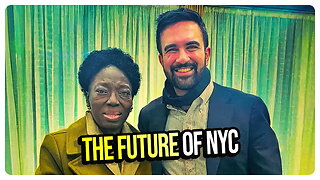 1:11:07
1:11:07
vivafrei
2 hours agoFishing for Lawsuits! I Get Blocked Because Zohran is Anti-Gay? Halloween Terror Plot & MORE!
72.1K20 -
 1:12:46
1:12:46
Russell Brand
4 hours agoWE’RE BACK! The Fight for Freedom Starts NOW - SF645
68.2K59 -
 1:07:56
1:07:56
The Quartering
3 hours agoBen Shapiro Vs Tucker Carlson, Blackface Trick Works, Kash Patel Under Fire, Based Woman Vs Trans
58.2K15 -
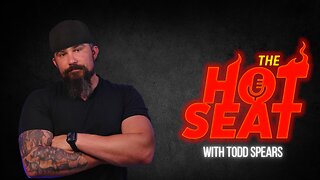 LIVE
LIVE
The HotSeat With Todd Spears
1 hour agoEpisode 202: Ladies it's YOUR Battle too!
704 watching